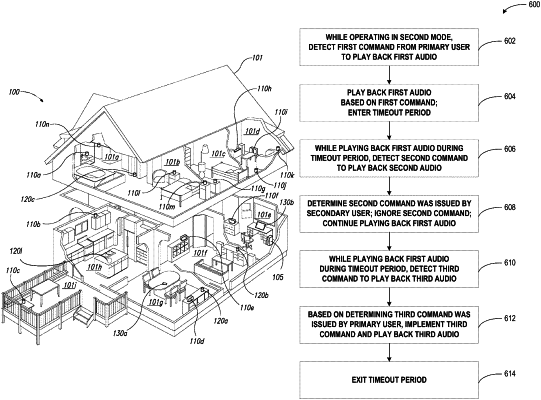| CPC H04R 27/00 (2013.01) [H03G 1/02 (2013.01); H03G 5/005 (2013.01); H03G 5/16 (2013.01); H04R 5/04 (2013.01); H04R 2227/005 (2013.01)] | 20 Claims |

|
1. A playback device comprising:
at least one processor;
a non-transitory computer-readable medium; and
program instructions stored on the non-transitory computer-readable medium that are executable by the at least one processor such that the playback device is configured to:
based on a room setting of the playback device, determine that the playback device is associated with a first room of a media playback system;
based on determining that the playback device is associated with the first room, operate in a first mode, wherein the first mode comprises a default mode of the playback device, and wherein the first mode is associated with a first user type, a first set of playback control options, and a first type of audio content;
while operating in the first mode, determine that the room setting of the playback device has changed;
based on the changed room setting, determine that the playback device is no longer associated with the first room and is associated with a second room of the media playback system;
based on determining that the playback device is associated with the second room, transition from operating in the first mode to operating in a second mode, wherein the second mode is associated with a second user type that is different from the first user type, a second set of playback control options that is different from the first set of playback control options, and a second type of audio content that is different from the first type of audio content;
while operating in the second mode, determine that the playback device is no longer associated with the second room and is associated with the first room;
transition from operating in the second mode to operating in the first mode;
while operating in the first mode, receive a command to play back audio content;
determine that the command corresponds to a user of the first user type, a playback control option within the first set of playback control options, and audio content of the first type of audio content; and
based on (i) operating in the first mode and (ii) the determination that the command corresponds to a user of the first user type, a playback control option within the first set of playback control options, and audio content of the first type of audio content, execute the command to play back the audio content.
|